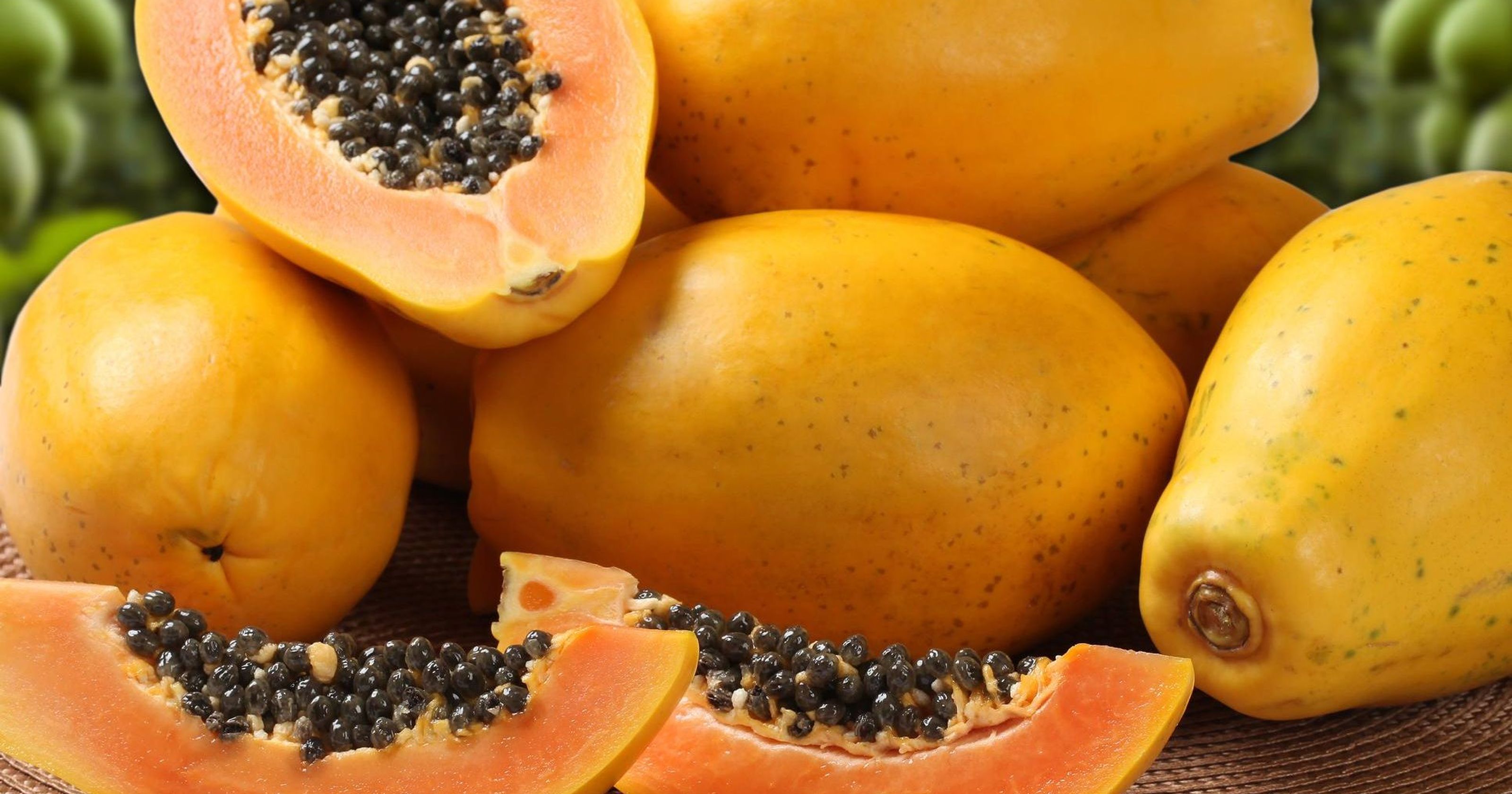Enjoy a Taste of The Tropics with Papaya
TEXARKANA, Ark. –
When was the last time you ate a Papaya? Last summer, last week, never? Since June is Papaya Month, why not take a taste of the tropics!
The papaya is believed to be native to southern Mexico through the Andes of South America. It was spread to the south by the Indians and throughout the Caribbean through Spanish Exploration. In the 1800’s, papaya was introduced into Hawaii, and the early 20th century it was introduced in Florida. However, the Florida crop experienced the introduction of a viral disease which destroyed the crop. This left Hawaii as the only state in the United States to produce papaya commercially today.
There are two main types of papaya. The Hawaiian, usually known as Solo, is found most often in supermarkets. These papayas are pear shaped, weigh about one pound each, and have yellow skin when ripe. The flesh is bright orange or pinkish depending on the variety, and contains small black seeds clustered in the center. They are somewhat reminiscent of black pepper, if eaten, and many times are used as an ingredient in salad dressing.
Mexican papayas, sometimes called Caribbean or Asian, are usually found in Latino supermarkets. Mexican papayas are much larger than the Hawaiian types and can weigh up to 10 pounds each and be over 15 inches long. The flesh of this variety might be yellow, orange, or pink. The flavor is less intense than the Hawaiian papaya, but is still delicious and extremely enjoyable.
Once cut, a ripened papaya will be juicy, sweet and somewhat cantaloupe in flavor, although some types may be musky. It is most often consumed fresh as a breakfast or dessert fruit, but will also be used in a variety of products such as fruit juices, jams and even ice cream, or eaten as a dried fruit.
When shopping for a ripe papaya, look for skin that is turning from green to yellow. You should be able to press your thumb slightly into the flesh. If it's too soft or mushy or if it has a sweet smell to it, the papaya is overripe.
Slightly green papayas will ripen quickly at room temperature, especially if placed in a paper bag. As the papaya ripens, it will turn from green to yellow. Place ripe papayas in a plastic bag and store in the refrigerator. Papayas will keep for a week, but it is best to use them within a day or two.
To prepare your papaya, rinse under cool water to remove any dust or dirt. Place on a cutting board and using a large sharp knife to cut the papaya in half lengthwise. Separate into two sections.
Using a large spoon, scrape out the seeds. Try not to cut too deeply with your spoon or you can lose a lot of the fruit.
To peel a papaya, hold it vertically and run a knife downward along the skin in long slices (think – peeling a potato!) Again, try not to slice too deeply.
Papaya can be sliced into wedges as thick or thin as you like, then placed in a dessert bowl and served as is. For a tropical flavor, squeeze lime juice over the papaya to bring out the tropical flavors! Another option is to combine fresh papaya with other fruit in a fresh fruit salad. Don’t forget to include them in your breakfast; papaya wedges look terrific on the side of a plate.
Let’s not forget that papayas pack a nutritional wallop and are known as a “nutritional masterpiece.” They are rich in vitamin A, vitamin E, carotenoids Lutein and zeaxanthin, and lycopene. Papayas have 33 percent more vitamin C and 50 percent more potassium than oranges, with fewer calories. Papayas have 13 times more vitamin C and more than twice the potassium of apples, and four times more vitamin E than both apples and oranges.
If it has been a while since you have tried papaya, it might be time to try it again. Although you will not find papaya at the Downtown Farmers Market, you will find lots of other locally grown fresh fruits, vegetables, herbs and plants. Come visit me during the grand re-opening, Saturday, June 7th from 8:30 am until 11:30 am, and see what I am cooking up.
If you would like more information on incorporating fresh vegetables or fruits into your diet, please contact me at the University of Arkansas System Division of Agriculture, Cooperative Extension Service in Miller County at 400 Laurel, Suite 215, Texarkana, call 870-779-3609, or e-mail me at cdue@uada.edu.
By Carla Due
County Extension Agent - FCS
The Cooperative Extension Service
U of A System Division of Agriculture
Media Contact: Carla Due
County Extension Agent - FCS
U of A Division of Agriculture
Cooperative Extension Service
400 Laurel Street, Suite 215 Texarkana AR 71854
(870) 779-3609
cdue@uada.edu
Related Links
The Arkansas Cooperative Extension Service is an equal opportunity institution. If
you require a reasonable accommodation to participate or need materials in another
format, please contact your County Extension office (or other appropriate office)
as soon as possible. Dial 711 for Arkansas Relay.
Pursuant to 7 CFR § 15.3, the University of Arkansas System Division of Agriculture
offers all its Extension and Research programs and services (including employment)
without regard to race, color, sex, national origin, religion, age, disability, marital
or veteran status, genetic information, sexual preference, pregnancy or any other
legally protected status, and is an equal opportunity institution.
